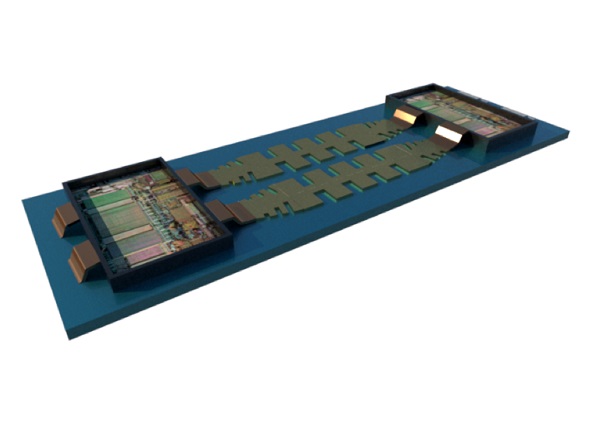
Michigan Engineering researchers are addressing a performance bottleneck that currently exists in the information transfer between electronic chips located a few centimeters apart in a computing system. Led by electrical engineering professor Pinaki Mazumder, their work – dubbed the “last centimeter barrier” – will enable a new generation of electronic systems with ultra high speed data transfers.
Electronic chips currently use metallic wires to connect internal building blocks and circuit elements. For long-distance and higher-speed applications, connections are made via much faster optical interconnects.
However, traditional metal interconnects have bandwidth limitations and can be susceptible to crosstalk at high speed. Optical interconnects are not energy-efficient for short range communications of 15 cm or less and are, therefore, not suitable for chip-to-chip applications.
Identifying an alternative high-speed interface without these shortcomings has remained an open challenge, one that Mazumder and his colleagues seek to solve using a new type of channel to transfer signals.
